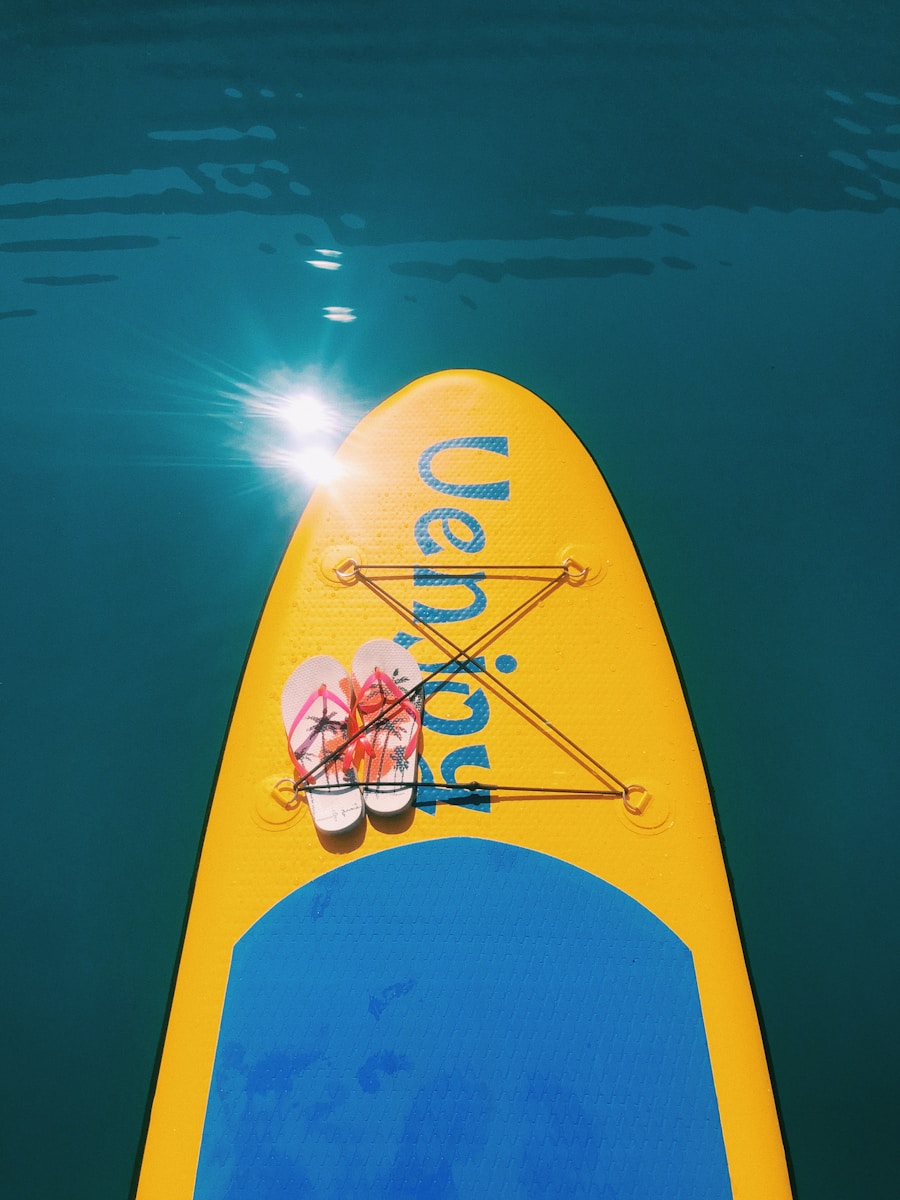Download links
How to install Surfing Makes Historic Debut at Olympics APK?
1. Tap the downloaded Surfing Makes Historic Debut at Olympics APK file.
2. Touch install.
3. Follow the steps on the screen.
Description
The journey of surfing to Olympic inclusion is a fascinating tale that intertwines the sport’s rich cultural heritage with the evolving landscape of global athletics. Surfing, which has its roots in ancient Polynesian culture, was first popularized in the early 20th century, particularly in Hawaii. The sport embodies a unique blend of athleticism, artistry, and connection to nature, making it a compelling candidate for the Olympic stage.
However, the path to recognition was not straightforward. The International Surfing Association (ISA) played a pivotal role in advocating for surfing’s inclusion in the Olympic Games. Their efforts culminated in 2016 when the International Olympic Committee (IOC) officially announced that surfing would be part of the Tokyo 2020 Games.
The decision to include surfing was influenced by several factors, including the sport’s growing global popularity and its appeal to younger audiences. The IOC recognized that surfing could attract a demographic that is often disengaged from traditional Olympic sports. This strategic move was not merely about expanding the roster of events; it was also about revitalizing the Olympic brand and making it more relevant in a rapidly changing world.
The inclusion of surfing signified a broader trend within the Olympics to embrace sports that resonate with youth culture, such as skateboarding and sport climbing, which were also added to the Tokyo program.
Key Takeaways
- Surfing’s inclusion in the Olympics is the result of a long journey towards inclusion and recognition as a legitimate sport.
- Spectators can expect to see high-energy, dynamic performances from the world’s best surfers at the Olympics.
- Athletes from diverse backgrounds and countries will compete in the surfing event, showcasing the global appeal of the sport.
- The surfing competition will take place at a stunning coastal venue, providing a picturesque backdrop for the event.
- Surfing’s inclusion in the Olympics is expected to increase the sport’s popularity and participation worldwide, leading to potential growth and development in the future.
The Surfing Event: What to Expect at the Olympics
The surfing competition at the Olympics promises to be a thrilling spectacle, showcasing the incredible skills and creativity of the world’s best surfers. Unlike many traditional sports that take place in controlled environments, surfing is heavily influenced by natural elements, particularly waves and weather conditions. This unpredictability adds an exciting layer of drama to the competition, as athletes must adapt their strategies based on the surf conditions on any given day.
The event will feature both men’s and women’s competitions, with surfers competing in heats to advance through elimination rounds. Athletes will be judged on a variety of criteria, including wave selection, difficulty of maneuvers, and overall style. Each surfer’s performance will be evaluated by a panel of judges who are experts in the sport, ensuring that the scoring reflects both technical proficiency and artistic expression.
The format will likely include short heats where surfers have a limited time to catch waves and perform their best tricks. This fast-paced environment will keep spectators on the edge of their seats as they witness breathtaking aerial maneuvers and powerful turns executed on the waves.
The Athletes: Profiles of the Surfers Competing at the Olympics

The roster of athletes competing in the Olympic surfing event is a diverse mix of seasoned professionals and rising stars from around the globe. Among them is Carissa Moore from Hawaii, a three-time world champion known for her powerful style and competitive spirit. Moore has been a trailblazer for women in surfing, advocating for gender equality within the sport and inspiring countless young female surfers.
Her presence at the Olympics not only elevates her status as an athlete but also highlights the importance of representation in sports. Another notable competitor is Gabriel Medina from Brazil, who made history as the first Brazilian to win a World Surf League title. Medina’s dynamic approach to surfing combines technical skill with an innate ability to read waves, making him a formidable opponent in any competition.
His journey from humble beginnings in São Paulo to becoming a global surfing icon exemplifies the transformative power of sport. Both Moore and Medina represent a new generation of surfers who are pushing boundaries and redefining what is possible on a surfboard.
The Venue: A Look at the Surfing Competition Location
| Location | Details |
|---|---|
| Beach Name | Sunset Beach |
| Wave Type | Reef Break |
| Wave Height | 8-15 feet |
| Water Temperature | 75-80°F |
| Local Time Zone | Hawaii-Aleutian Standard Time (HST) |
The surfing competition at the Tokyo 2020 Olympics will take place at Tsurigasaki Beach, located in Chiba Prefecture, just east of Tokyo. This beach is renowned for its consistent waves and picturesque scenery, making it an ideal location for both competitive surfing and recreational activities. Tsurigasaki Beach has hosted numerous national and international surfing events, providing a familiar backdrop for many of the athletes competing in the Olympics.
One of the unique aspects of Tsurigasaki Beach is its accessibility to urban populations. With Tokyo being one of the largest cities in the world, surfers from various backgrounds can easily reach this venue, fostering a sense of community among participants and spectators alike. The beach’s natural beauty, combined with its proximity to Japan’s vibrant capital, creates an atmosphere that is both exhilarating and culturally rich.
As surfers ride the waves against the backdrop of Japan’s stunning coastline, they will not only be competing for medals but also celebrating the spirit of surfing as a global sport.
The Impact: How Surfing’s Inclusion in the Olympics Will Affect the Sport
The inclusion of surfing in the Olympics is poised to have far-reaching implications for the sport itself. One immediate effect is likely to be an increase in visibility and interest in competitive surfing worldwide. As millions tune in to watch their favorite athletes compete for Olympic glory, new fans may emerge, leading to greater participation at grassroots levels.
This surge in interest could inspire young surfers to pursue their passion more seriously, potentially leading to an influx of talent into professional circuits. Moreover, Olympic recognition can provide financial benefits for athletes and organizations involved in surfing. Sponsorship opportunities are expected to grow as brands seek to align themselves with this dynamic sport and its vibrant culture.
Increased funding can also lead to improved training facilities and resources for aspiring surfers, particularly in regions where access to quality coaching and equipment has been limited. This financial boost can help elevate competitive standards globally, fostering a more diverse range of talent across different countries.
The Future: What’s Next for Surfing in the Olympics

The Potential for Growth and Innovation
One potential area for growth is the introduction of team events or mixed-gender competitions, which could further enhance inclusivity and showcase collaboration among athletes.
Sustainability and Environmental Stewardship
Additionally, as environmental concerns become increasingly prominent in global discussions, there may be pressure on Olympic organizers to ensure that surfing events are conducted sustainably. This could involve measures such as minimizing waste at venues or promoting eco-friendly practices among athletes and fans alike. The relationship between surfing and environmental stewardship is particularly significant given that surfers are often advocates for ocean conservation.
A New Era for Surfing
In conclusion, while surfing’s debut at the Olympics marks a significant milestone for the sport, it also opens up new avenues for growth and development. As athletes prepare to ride the waves at Tsurigasaki Beach, they carry with them not only their personal aspirations but also the hopes of a community eager to see their beloved sport thrive on one of the world’s largest stages.
Surfing enthusiasts around the world are eagerly anticipating the sport’s debut at the Olympics. With the excitement building, many are turning to apps like Taya365 to stay updated on the latest news and developments in the surfing world. As athletes prepare to compete on the world stage, fans can use apps like Taya365 to track their favorite surfers and follow their journey to the Olympics. Additionally, Taya365 offers lottery opportunities that could potentially lead to big wins, adding an extra element of excitement for surfing fans.
FAQs
What is surfing in the Olympics?
Surfing is a sport that involves riding ocean waves on a surfboard. In the Olympics, surfing is a competitive event where athletes showcase their skills in riding waves.
When was surfing introduced to the Olympics?
Surfing was introduced to the Olympics for the first time in the 2020 Tokyo Olympics. It was included as a new sport to attract a younger audience and promote diversity in the games.
How is surfing judged in the Olympics?
Surfing in the Olympics is judged based on the athletes’ ability to perform maneuvers on the waves, their style, and the difficulty of the waves they ride. Judges score each ride on a scale of 0-10, with the best two rides counting towards the athlete’s total score.
What are the rules and regulations for surfing in the Olympics?
The rules and regulations for surfing in the Olympics are set by the International Surfing Association (ISA) and the International Olympic Committee (IOC). They include guidelines for wave selection, athlete conduct, and judging criteria to ensure fair and competitive events.
Which countries are known for their strong surfing teams in the Olympics?
Countries with strong surfing traditions and coastal regions, such as the United States, Australia, Brazil, and Japan, are known for their strong surfing teams in the Olympics. These countries have produced top athletes who have excelled in international surfing competitions.





